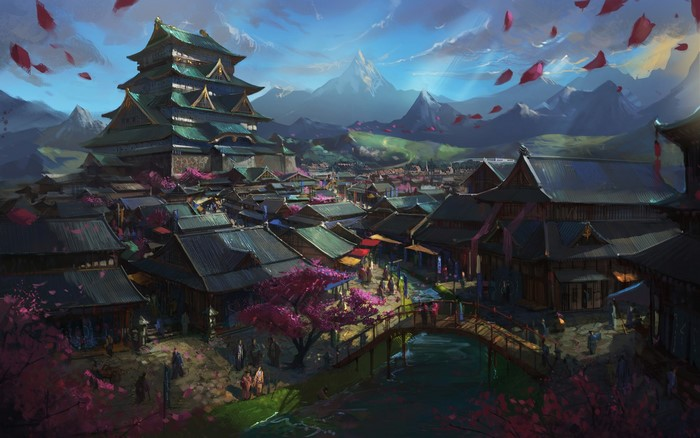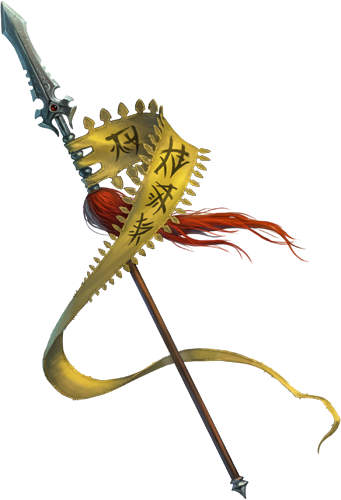Kingdom of Lingshen
Overview
The Kingdom of Lingshen, originally Shou Lang's southern colonies, has risen as an independent state under the resurrected Hao Dynasty, whose bloodline was supposed to have died out long ago. Lingshen has been reunified after decades of disintegration and internal warfare, and it is a place where ancient traditions face the difficulties of a changing world. Under the Hao Dynasty's leadership, Lingshen has began to establish itself as a regional force. Its strategic location, abundant natural resources, and blend of Shou Lang traditions with local innovations make it a kingdom primed for greatness—but one that must yet strike a delicate balance between its heritage, ambitions, and the external forces shaping its destiny.A New Kingdom
The Kingdom of Lingshen is governed by the newly restored Hao Dynasty, which descended directly from Shou Lang's imperial emperors. At its center is the Throne, which is occupied by King Hao Liang, a ruler respected for his ancestral ties but questioned for his capacity to lead in a more complex and modern day. While the monarchy wields supreme power, running such a diverse and huge kingdom necessitates a network of subordinate structures. Lingshen is divided into provinces, each led by a Governor-General selected by the king. These officers are in charge of keeping order, collecting taxes, and supervising military fortifications, especially along the turbulent western border with Turam. However, their loyalty is not always guaranteed, as certain regions have strong local identities that periodically contradict royal decisions. Local magistrates that govern towns and villages sit beneath the Governor-Generals. These magistrates come from both noble families and a growing population of trained bureaucrats, combining traditional aristocratic authority with meritocratic principles derived from Shou Lang's administrative legacy. The monarchy also relies significantly on the Royal Court, which consists of ministers and advisors who oversee day-to-day operations. The Ministry of Defense, which administers the kingdom's standing army, and the Ministry of Commerce, which is in charge of regulating trade across the interior waters and the Sea of Eels, are two key ministries. The Ministry of Harmony handles internal conflicts, religious affairs, and diplomacy, representing Lingshen's need to harmonize its diverse cultural influences.Lingshen's Society
The culture of Lingshen is a rich tapestry woven from its Shou colonial heritage, local traditions, and influences from neighboring Turam and Kushan. The restoration of the Hao Dynasty has revived imperial arts and customs, while regional diversity fosters unique practices in the kingdom’s cities, farmlands, and coasts. Religious life blends ancestor worship and Réndào , folk deities and yokai, and the many gods and philosphies of the southwest, reflecting the kingdom’s dynamic identity. Though socially hierarchical, the rise of merchants and scholars signals gradual change. Proud of their independence and heritage, the people of Lingshen balance tradition with innovation in their pursuit of a brighter future.Hanggong
Under the lax supervision of Lingshen, Hanggong, a thriving commercial port on the Sea of Eels coast, flourishes as a semi-autonomous city. Nearly 800 years ago, a criminal gang took control of the city, which gained a reputation for having liberal trade laws and a practical approach to government. Because of this lax regulation, Hanggong has become a safe haven for international traders, smugglers, and merchants, enabling it to thrive as a global center where products and cultures from all over southern Asora come together. Lingshen tolerates Hanggong's pseudo-independence since it serves as an important international commercial hub and a significant source of revenue. The city's capacity to draw money and preserve peace with minimum involvement benefits the kingdom, and its strategic location on the coast strengthens Lingshen's regional power. Allowing Hanggong to function freely provides Lingshen with economic benefits while avoiding the complexities of direct supervision over such a diverse and dynamic port.Demography and Population
Total Population : 3,897,330 citizens in 1200 AC
Races (Citizen) -
83% Human (Majority Shou, Minority Rashemi, Turami, Bedine, Calishite, etc)
7% Beastfolk (Majority Kitsune, Kappa, and Nekojin, minority all others)
4% Elves and Half Elves.
3% Dwarves (Majority Mountain Dwarf, Minority Wild Dwarf)
3% All others
Founding Date
953 AC
Capital
Demonym
Lingshenese
Leader
Government System
Monarchy, Absolute
Power Structure
Feudal state
Economic System
Traditional
Major Exports
Metal and Ore, Horses, Luxury Goods, Exotic Animals
Major Imports
Rice and Grain, Tropical Hardwood, Spices, Military Goods
Neighboring Nations
Related Ethnicities




